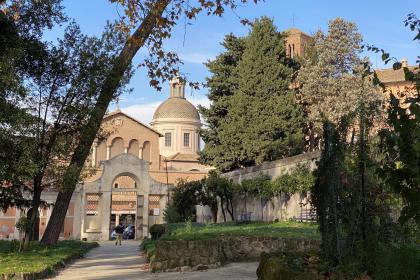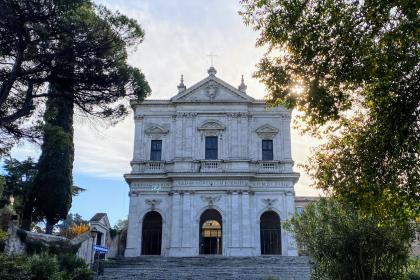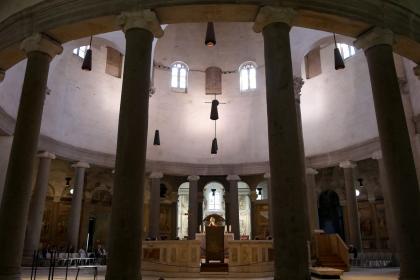
Villa Celimontana is one of the most loved historical parks by the Romans. The suggestive layout of an English garden and the quiet that pervades it make it the ideal place for outdoor breakfasts and walks among delightful avenues framed by centenary trees, thick hedges, and Roman antiquities.
Inside there is a nymphaeum, an underground room dating back to the end of the 16th century, and one of the few surviving elements of the original layout of the villa. In the first place, it was below the aviary - from which it takes its name - to the right of the noble "casino", which today houses the Italian Geographical Society, until the 18th century when it was destroyed.
The nymphaeum was built during the works of arrangement of the western slopes of the garden, carried out between 1585 and 1590; it consists of a flight of steps that rises from the avenue between shelves paved with mosaics with polychrome tiles depicting an eagle, the heraldic symbol of the Mattei family.
The apse nymphaeum is lively decorated and has, in the lower part, a "tartar" cladding with marble flakes, pumice cubes, and calcareous concretions arranged in a mosaic according to geometric modules. The upper part is decorated with colored plaster, enriched with fragments of multicolored marble in imitation of the tables made with mosaics of precious stones very popular in Rome in the second half of the 16th century, and with groups of shells of various kinds, chosen for their shape and the mother-of-pearl brilliance. The central part presents motifs of "grotesque" figures characterized by lively colors obtained by shredding colored marble mixed with painted plaster. Along the perimeter of the apse, which once functioned as a fountain, there are graceful masonry seats covered with peperino stone.
In 1613, a fountain by a "sculptor Baptist" enriched the environment; he created a triton on a sea horse that spouted water. The design was deleted in the 18th century. The nymphaeum became a place to stop and rest while enjoying the coolness of the shade.
Villa Celimontana

 Condividi
Condividi
Church of San Gregorio al Celio and Oratories of Sant'Andrea, Santa Silvia and Santa Barbara

 Condividi
Condividi
The Church of Santo Stefano Rotondo al Celio

 Condividi
Condividi
Information
Temporarily closed to public
 Condividi
Condividi
Location
To find out about all accessibility services, visit the Rome accessible section.











































